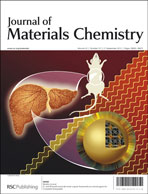Fluoropolymer containing unsaturation, an important intermediate for many reactions such as radical addition and Michael addition reaction, could be either utilized to synthesize fluoropolymer with desired functions or cured for rubber applications, which has rarely been investigated because of the absence of a synthetic strategy. A facile method to synthesize fluoropolymer with tunable unsaturation via controlled dehydrochlorination of commercially available poly(vinylidene fluoride-co-chlorotrifluoroethylene) (P(VDF-co-CTFE)) catalyzed by tertiary monoamines under mild conditions has been reported in this work. The resultant copolymers are carefully characterized with nuclear magnetic resonance (NMR), Fourier transform infrared (FTIR), and thermal gravimetric analysis (TGA). It has been shown that the elimination could be well controlled by employing proper solvent, catalyst and reaction conditions. The typical side reactions catalyzed with amines, such as Michael addition reaction and main chain scission during the dehydrofluorination of fluoropolymer, could be avoided in the present reaction system. The kinetics results indicate that the elimination reaction is in a bi-molecular mechanism (E2), which is well recognized in strong base-catalyzed elimination of halogenated hydrocarbon. The concentration, alkalinity and steric bulk of the catalysts, the polarity and capability to absorb HCl acid of solvents, and the reaction time and temperature exhibit dominant influences on the dehydrochlorination of P(VDF-co-CTFE). The fluoropolymer containing unsaturation is readily cured with peroxide, and the crosslinked fluoropolymer exhibits excellent solvent resistance and mechanical properties.

You have access to this article
 Please wait while we load your content...
Something went wrong. Try again?
Please wait while we load your content...
Something went wrong. Try again?


 Please wait while we load your content...
Please wait while we load your content...